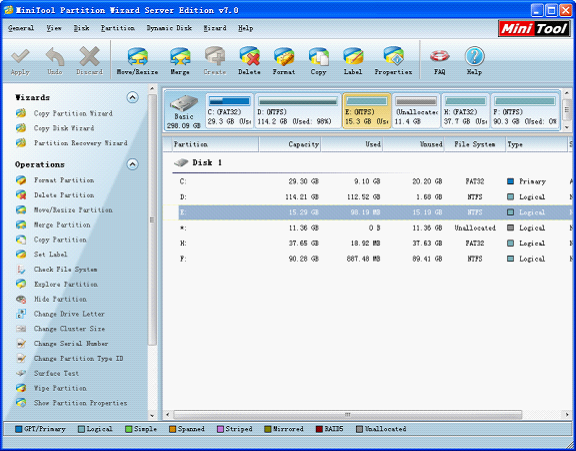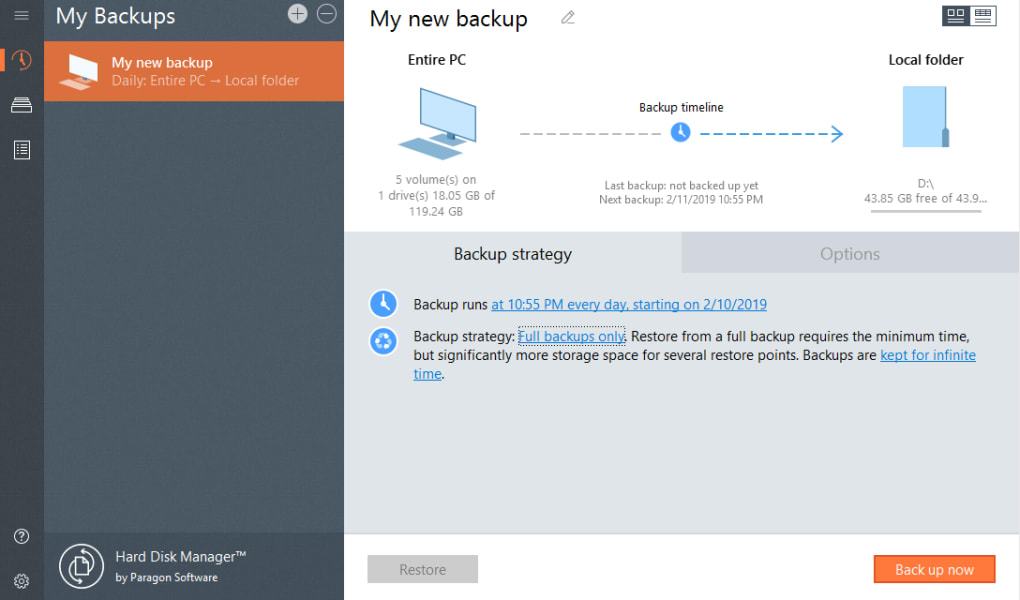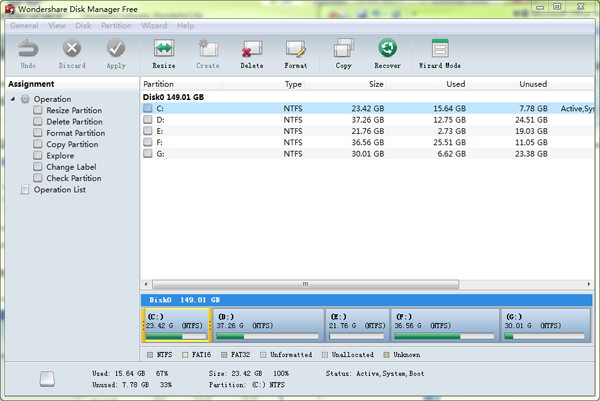

- Disk manager how to#
- Disk manager install#
- Disk manager driver#
- Disk manager free#
- Disk manager windows#
Information: highlight a partition and click this for details of the Drive, Volume & Size. Will be grayed out for partition currently being used. Mount/Unmount: the mount status of a partition can be changed by highlighting it and clicking this button. You can also choose to have the device checked every n (e.g., 100) times it boots. Disk manager driver#
Driver: the driver for a partition can be changed (shows for ntfs only). Edit: the mount point can be changed and mount options added or edited.  For mounted ntfs partitions, click on the driver name to get a handy pull-down menu of alternate possibilities. Check/uncheck the box of a highlighted partition to mount/unmount. If you have remote partitions listed in fstab, they will be ignored or possibly even destroyed, so check fstab before rebooting.
For mounted ntfs partitions, click on the driver name to get a handy pull-down menu of alternate possibilities. Check/uncheck the box of a highlighted partition to mount/unmount. If you have remote partitions listed in fstab, they will be ignored or possibly even destroyed, so check fstab before rebooting. Disk manager how to#
If you have questions about how to proceed, post over on the MX Forum.ĭM is intended for use on local partitions only. General cautionīecause DM writes directly to a critical system configuration file, make sure all the right boxes are checked and all the right settings are applied before you exit. The tool has been out of development since 2011, but MX Linux took over the project with permission from the original developer because it remains a handy way to manage disks without writing directly to the file (/etc/ fstab). With GParted you can resize, copy, and move partitions without data.
Disk manager free#
Fully manage configuration of file system GParted is a free partition editor for graphically managing your disk partitions. Automatically detect new partitions at startup. Thanks to Humble, Jan and other from the Kubernetes Storage Community for reviewing the approach and evaluating the use-case.Disk Manager (DM)is a simple file system GUI configuration tool that allows you to:. Thanks to Daniel for setting up the go-based SMART library. OpenEBS welcomes your feedback and contributions in any form possible. The detailed instructions for setting up development environment, building and testing are available here. When Disk Management opens, you should see an Initialize Disk window with the message 'You must initialize a disk before Logical Disk Manager can access it.'. kubectl get blockdevices -o yaml displays all the details of the disk captured by ndm for given disk resource.īefore building the image locally, you need to setup your development environment. kubectl get blockdevices -o wide displays the blockdevice along with the path at which the device is attached on the node. kubectl get blockdevices displays the blockdevices across the cluster, with NODENAME showing the node to which disk is attached,ĬLAIMSTATE showing whether the device is currently in use and STATE showing whether the device is connected to the node. Using kubectl to fetch BlockDevice Information Disk manager install#
This will install the daemon, operator and the exporters. Switch to Cluster Admin context and create the components with kubectl create -f ndm-operator.yaml. Edit ndm-operator.yaml to fit your environment: Set the namespace, serviceAccount, configure filters in the node-disk-manager-config-map. UsageĪ detailed usage documentation is maintained in the wiki. The feedback of users / organizations currently using OpenEBS can be found here Project StatusĬurrently, the NDM project is in beta. The design of the project is covered under this design proposal ndm-node-exporter daemonset, which runs on each node, queries the disk for details like SMART and expose it as prometheus metrics. ndm-cluster-exporter deployment, which fetches block device object from etcd and exposes it as prometheus metrics. node-disk-operator deployment, which acts as an inventory of block devices in the cluster. Disk manager windows#
Se hai bisogno di aiuto per liberare spazio sul tuo PC, vedi Pulizia disco in Windows o Liberare spazio su disco in Windows. Per aprire Gestione disco, fai clic con il pulsante destro del mouse o premi a lungo il pulsante Start e seleziona Gestione disco. node-disk-manager daemonset, which runs on each node and is responsible for device detection. Risolvere i problemi relativi a Gestione disco.
 Allow for dynamically attaching/detaching blockdevices to a Storage Pod, without requiring a restart. Predict failures on the blockdevices, to help with taking preventive actions. Easy to access inventory of block devices available across the Kubernetes Cluster. Si applica a: Windows 11, Windows 10, Windows Server 2022, Windows Server 2019, Windows Server 2016. While PVs are well suited for stateful workloads, the BlockDevice objects are aimed towards helping hyper-converged Storage Operators by providing abilities like: It contains a daemon which runs on each node, detects attached disks and loads them as BlockDevice objects (custom resource) into Kubernetes. It treats disks as resources that need to be monitored and managed just like other resources like CPU, Memory and Network. Node-disk-manager (NDM) aims to make it easy to manage the disks attached to the node.
Allow for dynamically attaching/detaching blockdevices to a Storage Pod, without requiring a restart. Predict failures on the blockdevices, to help with taking preventive actions. Easy to access inventory of block devices available across the Kubernetes Cluster. Si applica a: Windows 11, Windows 10, Windows Server 2022, Windows Server 2019, Windows Server 2016. While PVs are well suited for stateful workloads, the BlockDevice objects are aimed towards helping hyper-converged Storage Operators by providing abilities like: It contains a daemon which runs on each node, detects attached disks and loads them as BlockDevice objects (custom resource) into Kubernetes. It treats disks as resources that need to be monitored and managed just like other resources like CPU, Memory and Network. Node-disk-manager (NDM) aims to make it easy to manage the disks attached to the node.







 0 kommentar(er)
0 kommentar(er)
